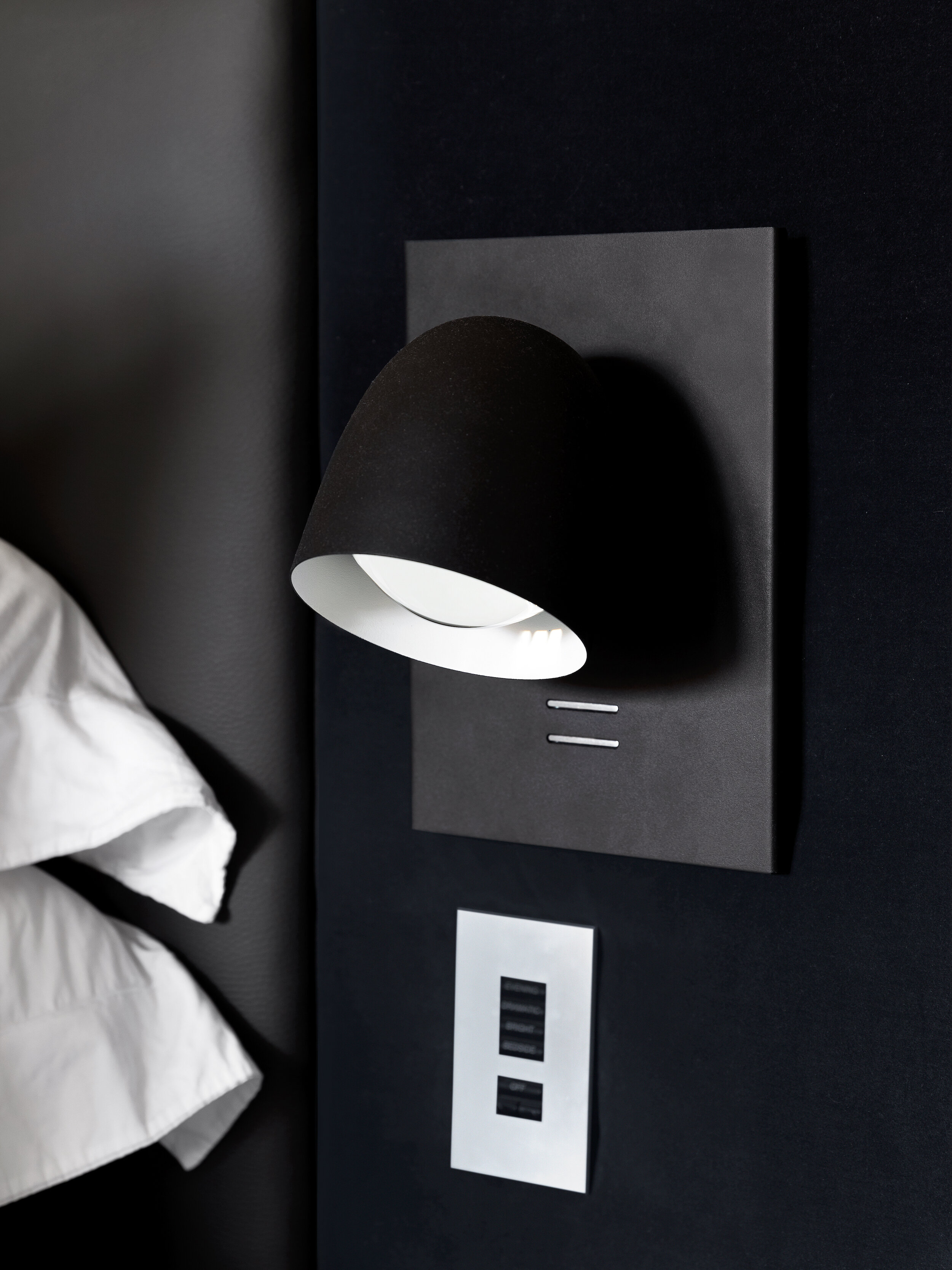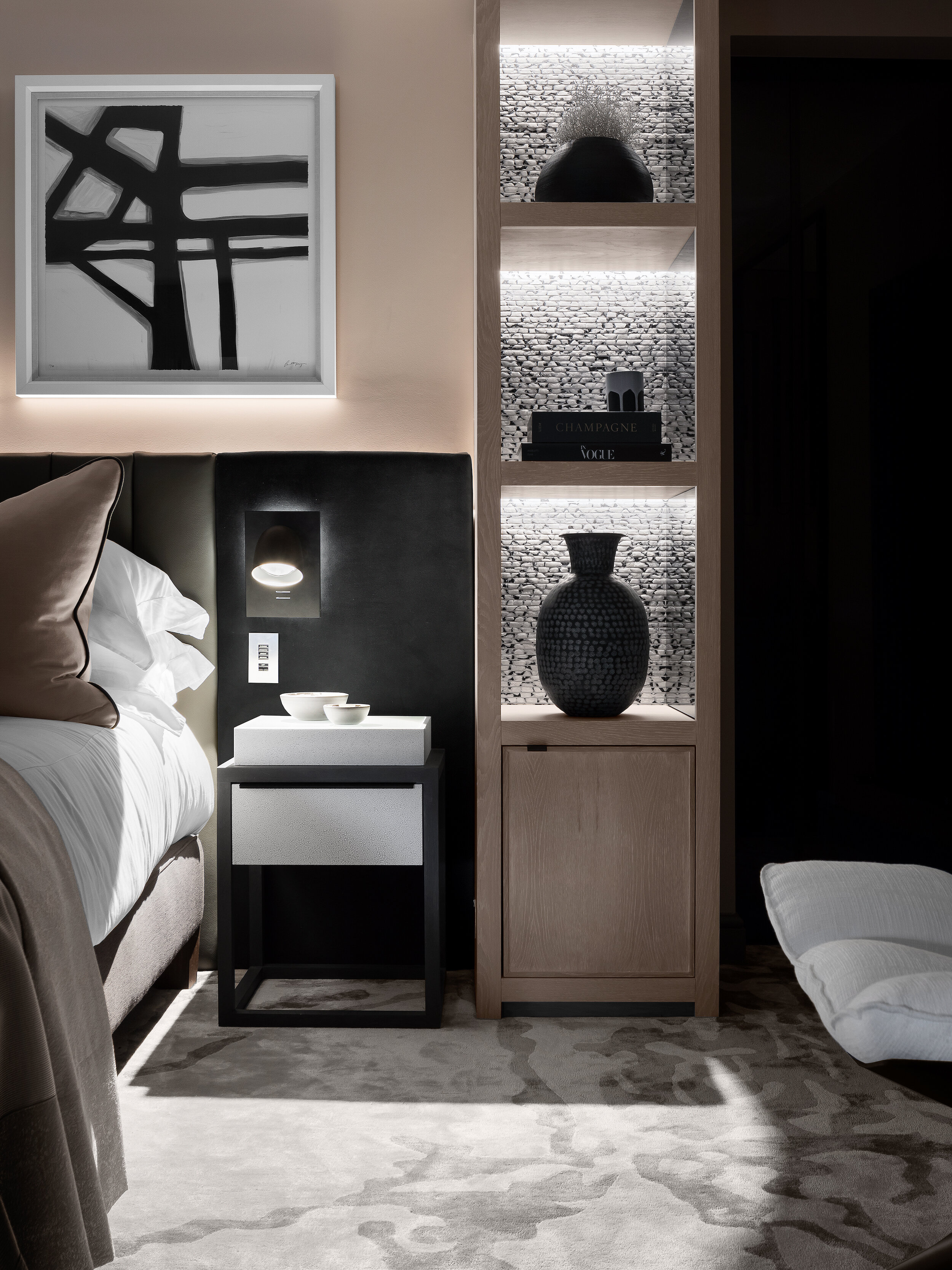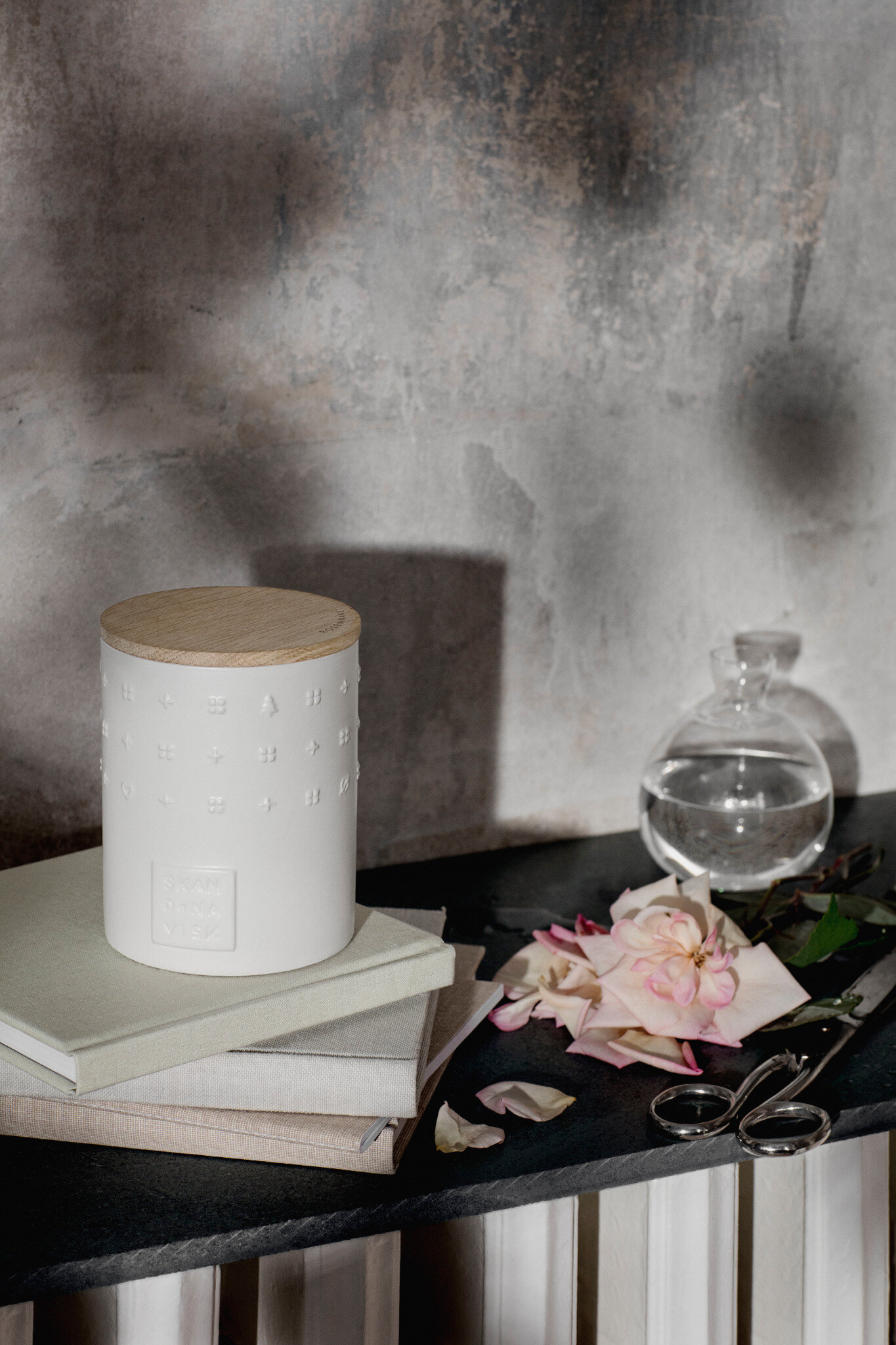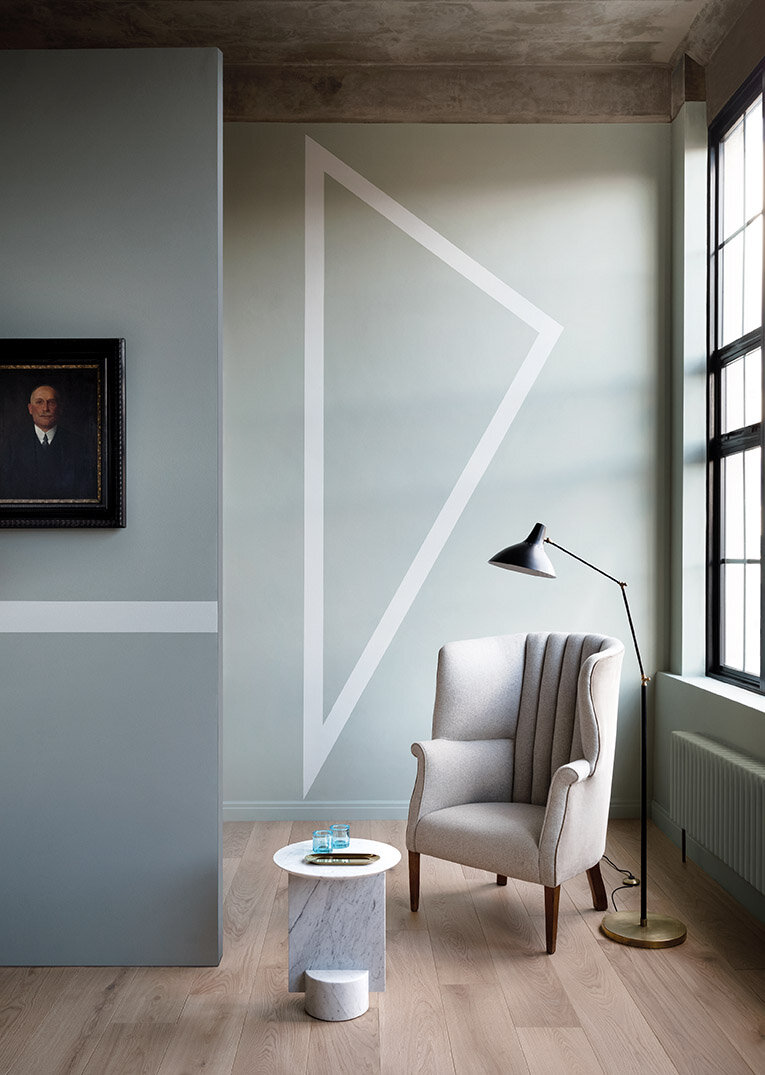Light; the power of life and illusion
Light. It’s a natural life source that we simply can’t live without. Even a house made of glass cannot guarantee sunny weather, which is why this weeks journal explores the importance of carefully considered lighting and its power of illusion...
Our eyes, the gateways to our souls - are just that; an external sense tool for understanding and observing, with the ability to teach and develop our internal consciousness. They say ‘seeing is believing’, which as a sentiment is true; sight, of all our senses, contributes the most to our overall awareness. It's the easiest of our senses to understand as we block visual stimuli without conscious thought and so we react much more easily to it than the other senses such as scent or tactility.
Question time
Even a house made of glass cannot guarantee sunny weather which is why our in-house interior design experts, Rachel and Claire, sat down to explain in more detail the importance of carefully considered lighting and the power of illusion...
1.
Lighting within the home is often an afterthought. There’s tendency to think more about colour, furniture and accessories rather than the crucial element of lighting. Why does lighting deserve more attention?
Lighting plays a significant role in how the mood of a room is created. Soft, low-level-lighting creates depth and tranquility within a space whereas high-level, bright, task-lighting would create the opposite effect. Lighting as a stand-alone element can be a form of art whilst defining a space, it can be playful but also sophisticated. The light emitted is undeniably important but so too is the design of the fixture itself. There’s nothing more impressive than walking into a room where stunning lighting designs have been carefully incorporated to enhance the other elements of the scheme, that we perhaps interact with more via our other sensory levels. - Rachel Usher.
2.
Lighting is defined within three different types; AMBIENT, task, and accent. Could you explain the difference between these?
Think of Ambient lighting as a foundation, it creates the overall distribution of illumination within a space. Ambient lighting comes in various guises from contemporary pendant lights to simple downlights but consideration of the spaces size and the influence of natural light within it should always inform how this type of lighting is used. It’s essential that the lighting levels are balanced to create a comfortable environment.
Task lightings purpose is practicality however if harnessed correctly, it can transforms a space into something that’s both beautiful and practical - think lighting under kitchen cabinets or carefully considered pathway lighting.
Accent lighting is the final layer, used to highlight key elements within a space. Up or downlights can be used to showcase a sculpture, a piece of art or a feature wall - the possibilities are endless. - Claire West
3.
What’s more important, utilising light to define reality within a space or creating illusion within it?
It’s dependant on how a client intends to utilise their space but, more often than not, the two should exist in conjunction. A bathroom for example may require crisp, clean lighting for practicality, used as a tool to benefit the function of that room. In most cases the same space is also required for relaxing and to create the required atmosphere different light systems would need to co-exist. Combining both types of lighting allows for flexibility within the space depending on how and why the client is using the room. - Rachel Usher
4.
When an illusion of light is needed how is this achieved?
Light and space are two of the most important things that we look for in a space. As designers we’re often asked to create an ‘illusion' of light and space where the environment naturally lacks this benefit. We consider the various elements that make up a space and carefully introduce different components to enhance it. For example, the scale of a timber floor plank, a light paint colour palette that flows from the walls and ceilings into the woodwork, mirrors and strategically placed furniture and lighting - all of these components lead the eye calmly around a space, creating an illusion. - Claire West
5.
What should be considered when the aim is to create a comforting home environment?
Lighting should exist on different levels. Mostly importantly consideration of how natural light works and feels within a space should be made and used as a starting point. Natural light will, naturally, change depending upon the time of day but also the aspect of the windows and the seasons.
Like the rest of a design scheme, lighting should be considered in layers, it’s more interesting if light derives from different sources whilst also allowing us to customise the light used depending on how the space needs to function at different times.
A light sources colour is really important too as our eyes see colour as a refraction of light. On a personal level, I find warmer lights much more comfortable and natural, it’s the type of light you would find in a south-facing room and makes colours appear more yellow in hue. Creating a comforting environment does however really depend on the individual. - Rachel Usher.
6.
Why is considered lighting within commercial spaces so important?
Regardless of how beautiful an interior scheme is, if lighting has not been carefully considered the space will fail. Just like residential properties there are two fundamentals which need to be considered; form and function. Ambient and task lighting should be used to give an overall, practical illumination, designed to meet the needs of the space from a functional point of view, whether that be a workspace or a restaurant. Accent lighting should also be applied to reinforce the brands identity and to create the desired atmosphere. The style of light, its scale, positioning and the quantity used should all be mindfully considered. - Claire West
7.
Should lighting be harnessed uniquely depending the type of commercial space, for example restaurants and workspaces or should the emotional needs of the space be the main priority?
Lighting design is an art form in itself, on large residential and commercial schemes we would work closely with a lighting consultant to ensure the lighting is designed to meet the project requirements, both from a practical and emotive perspective. All spaces need emotive consideration, creating an atmosphere which relates to the service is paramount to its success, forming a space that people enjoy spending their time. - Claire West
8.
Can you think you of a residential or commercial project where the lighting design has had a significant impact on the emotive experience of the space?
On a recent project we have specified some architectural lighting, hidden into wall recesses and joinery details. The overall flow through the property has been connected with the hidden features and washes of light, emphasising the beauty of the interior architecture and creating a home that feels restful, contemporary and sophisticated. - Rachel Usher.
9.
How should outdoor lighting be approached?
Outside lighting can be considered from a number of perspectives; directional, architectural and accent, all of which require tones of light from multiple sources.
For properties with long sweeping driveways lighting can be utilised practically as a guide towards a property. Architectural lighting can be used to wash areas of a building in light, highlighting architectural features, defining its shape and form. Accent lighting is most often used to bring landscaped areas to life. Low-level lights which bathe trees and external features in a light glow can make the most out of an external space when it would otherwise be under the cover of darkness.
For commercial projects, well specified external lighting can make all the difference in how inviting or dramatic a venue appears and lighting choices should be a key consideration as part of the overall design; holistically considered. - Rachel Usher
10.
Which three lighting brands or designers are you particularly found of and why?
I still love the clean-lines deriving from Scandinavia so Normann Copenhagen and Vita Copenhagen are firm favourites of mine. I also love Northern Lighting’s Acorn Pendant by Atle Tveit - they’re installed in my kitchen at home and I LOVE them.
I will always support British brands where I can, I really respect how the self-taught Tom Dixon is progressing aesthetically; innovative, sculptural and yet always elegant. Another British company I love to work with is CTO, a company that allow us to customise fittings to our clients bespoke requirements. Sorry, I couldn't name just three… - Claire West
Successful scents; why you should trust your feelings, not obey the rules
We often underestimate the unique abilities of scent, overlooking their undeniable link to our emotions, feelings and memories. We explore the importance of trusting your feelings, rather than obeying the rules around aromas.
We’ve all been there. That moment when without warning, a scent hits your nose and you’re transported back to another time and place. A sudden change of feelings ensues, not dissimilar to deja vu, that sudden feeling of having been somewhere before. Our memories transport us back before we consciously understand why, it’s intuitive and can be comforting or destabilising for our emotional wellbeing.
Scents are processed in the olfactory cortex of the limbic system, which is an area of the brain closely located to where our emotions and memories are stored. Individual aromas are made-up of molecules which the nose senses through vibrations, sending a signal to the most emotional aspect of our brains. This biological process subsequently affects our experiences, whether that be at home or in the outside world. Once we understand this natural human behaviour it makes obvious sense why we feel the way we do when we encounter aromas; it’s not something we can avoid, it’s built into our individual foundations.
Creating ambience and mood with scents
Whilst scent is one of our most influential emotions is also the easiest to harness, how we encounter a space and our emotional connection to it can be consciously manufactured to improve our well being. By using a strategic approach to incorporating scents within a space we have the power to determine the ambience or mood - whether that be to stimulate, comfort or calm, with the added advantage of not needing to invest heavily.
A practice you have most likely already heard of, aromatherapy, is known for its holistic approach and utilises scent to improve both psychological and physical health. Listed below are scents commonly used within the practice, all of which can be harnessed for the needs of an individual space.
Cinnamon is an emotional stimulant, known to reduce stress and encourage a focused mind.
Eucalyptus eliminates negativity, purifying spaces to create a fresh atmosphere.
Cedarwood balances our psychological emotions but is considered an equally powerful physical health stimulant.
Sandalwood creates a calm and inspiring atmosphere and so is a powerful antidepressant.
Patchouli can often be found in its purest natural form, producing an uplifting, regenerative feeling.
Rose is a powerful scent, creating balance for a stress free environment.
Lavender creates a serene atmosphere which calms and relaxes.
Scented candles are an ideal way to add natural serenity to a space, with aromas that gradually build. Using candle light in the evening when winding down is also another natural way to control our mood, a way of avoiding bright LED lights which confuse our body clocks and keep us alert.
The intensity of a fragrance also determines how quickly we notice or recall memories from it and so it’s important to also consider the level of scent we apply within a space.
Balancing indoor air
Burning candles within modern air-tight spaces does incur unfortunate side-effects on the quality of air we’re breathing in. You may be surprised to learn that candles, air fresheners, plug-ins and scented bleach wipes all emit the chemicals used to create their fragrance, which when released into the air lower the quality of air we’re breathing in.
Introducing humble house-plants is in instant remedy to this, just like nature outdoors, indoor botanicals have the power to clean the air around us; removing any chemicals released.
Scent is fundamental to the success of an interior design scheme.
Trusting and acknowledging your feelings is the only way to successfully create atmosphere within your space. Although intangible, scent is a powerful tool which creates atmosphere, truly individual to you and your space.
A personalised environment is at the core of what we aim to achieve here at Rachel Usher Interior Design which is why we spend time getting to know your true individual needs for a space. We don’t follow or obey the rules, we create new ones with you; relecting your past present and future...
An emotionally considered home
A successful interior scheme enhances the way you experience a space whilst reflecting your individuality. We explore the importance of design that’s emotionally considered.
When designing a space it’s important to look attentively at all the various elements of a room. Practicality is important but consideration of the mood and the various senses that form this are equally significant in the design process; including intangible components such as scent. We are of course, all different. Individuality should direct how each sense is harnessed to form a nurturing, emotional connection; customising the space to create a unique experience. Rachel Usher explains;
“Design affects our senses, whether that be in the way that we interact with light and space, the texture of materials or the furnishings used; all of these elements directly affect the comfort & purpose of a space, relating to how we feel and influencing our emotional wellbeing
”
For most of us, escaping the stresses of daily life is the most important factor we look for in our home environments and understanding the different senses we’re surround by in our dwellings is a good place to start in creating a mindful space.
Our vision senses have the ability to change our behaviour, how we interact with light for instance can dramatically influence our sleeping behaviour; for a relaxing evening it’s best to avoid bright LED lights as the blue wavelengths keeps us alert, confusing our natural body clocks and would be better served in an office space where productivity is key. Lamps or candles that emit a warm glow are more ideal for winding down at night and the spaces we gravitate towards in the evening should take this into consideration.
Colour informs every aspect of our daily lives, our reactions are often emotional but also intuitive, without us even noticing. We’re often drawn to colours we like without considering their impact; where and how colour is used should again be mindfully considered.
“It is the interplay with our senses that creates an experience, for example the use of colour can evoke feelings of warmth and comfort if applied correctly; considering the size and purpose of the space”
Although intangible, our sense of smell has the ability to provoke deep emotions within our brain and likes or dislikes are often based purely on these emotional associations.
Harnessing our sense of smell is incredibly important, scents have an ability quite unlike anything else; to unlock memories and transport us perhaps to a time and place long forgotten.
“The scent of a space’s is as fundamental to the success of a design as the use of colour or texture”
Notably, our sense of touch is the most significant as our entire body is receptive to tactile qualities. We are directly affected by the use of different materials and respond to them, again, in an often personal way. We learn from our sense of touch and make judgments from these, developing deep associations which directly affect our thoughts and feelings.
So when designing a space, whether that be a home or social environment it’s undeniably important that emotional needs are fully considered. Our wants often over-power our needs but by acknowledging these personal feelings and reactions we’re able to ensure that both align; providing balance.
Designing an emotionally considered space is important, after all, you literally have to live with it. If you’re in the need of professional expertise please do get in touch; our interior design services are flexible, allowing us the freedom to cater to projects of various sizes. We work closely with all of our clients to realise imaginative spaces which truly reflect your vision and aspirations to enhance your at-home-experience.












